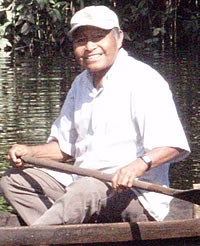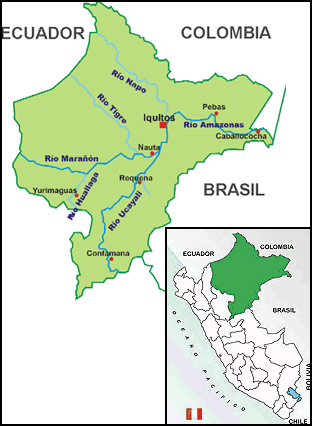The Northern Pastaza Quichua people originally lived in the jungles of Ecuador and were several different tribes with diverse languages, but in the 1700s, Dominican missionaries influenced the surrounding tribes to all speak Quichua and merge as one people. During this time, the indigenous population was largely reduced by Western diseases. The violent rubber boom at the turn of the twentieth century caused even more depopulation and motivated many Northern Pastaza Quichua people to move south into Peru deeper into the jungle.
The Summer Institute of Linguistics (SIL) translated the New Testament into the Northern Pastaza Quichua dialect in Ecuador, and an SIL worker recently sent boxes of the New Testament to the Northern Pastaza Quichua communities on the Tigre River in Peru.
In the 1980s, a foreign missionary worked on the Tigre River, and local churches have also worked in the area. Today, various churches exist in the nearby non-indigenous towns. They are all Spanish speaking, but some of their members come from Quichua-speaking villages. Most mission efforts on the Tigre River are short-term visits that focus on providing training to the non-indigenous churches in the larger towns.
Some say that the Northern Pastaza Quichua have been influenced by Catholicism, although villagers who identify as Catholic rarely read their Bibles or engage regularly with their faith in any way. Very few Northern Pastaza Quichua know Christ in a personal way, and they remain without any churches in their own language and community.
The Northern Pastaza Quichua people live along the Tigre and Curaray Rivers deep in the northern jungle of Peru.
The Northern Pastaza Quichua live a daily subsistence lifestyle oriented around farming, hunting, and fishing. Principal crops include plantains, mantioc, rice, maize, and cotton. Many Northern Pastaza Quichua men work under a patronage system extracting lumber. The Northern Pastaza Quichua generally have little education, and 47% of the population is illiterate.
The Northern Pastaza Quichua believe that the world was created by Yaya (god), who floats above the water. He continues to sustain it to this day, but at any point, he could flood the world and cause its destruction if people's wickedness becomes too great.
The Northern Pastaza Quichua hold to animistic views that seek to discover spiritual causes for life problems and resolve them through shamanistic rituals. They attribute physical problems to curses whose source could be anything from a plant to a bird.
The Northern Pastaza Quichua people need mission workers who will live among them long-term and do steady discipleship and leadership training.
They need churches in their own communities and language.
Pray for Northern Pastaza Quichua believers in non-indigenous churches to grow in their faith and share the gospel with their communities.
Pray for self-sufficient, Quichua-speaking churches in Northern Pastaza Quichua communities.
Pray for the development of spiritually mature pastors, teachers, and leaders among the Northern Pastaza Quichua.
Pray that God would raise up long-term workers to live among the Northern Pastaza Quichua.
Scripture Prayers for the Quichua, Northern Pastaza in Peru.
| Profile Source: Pioneers |











